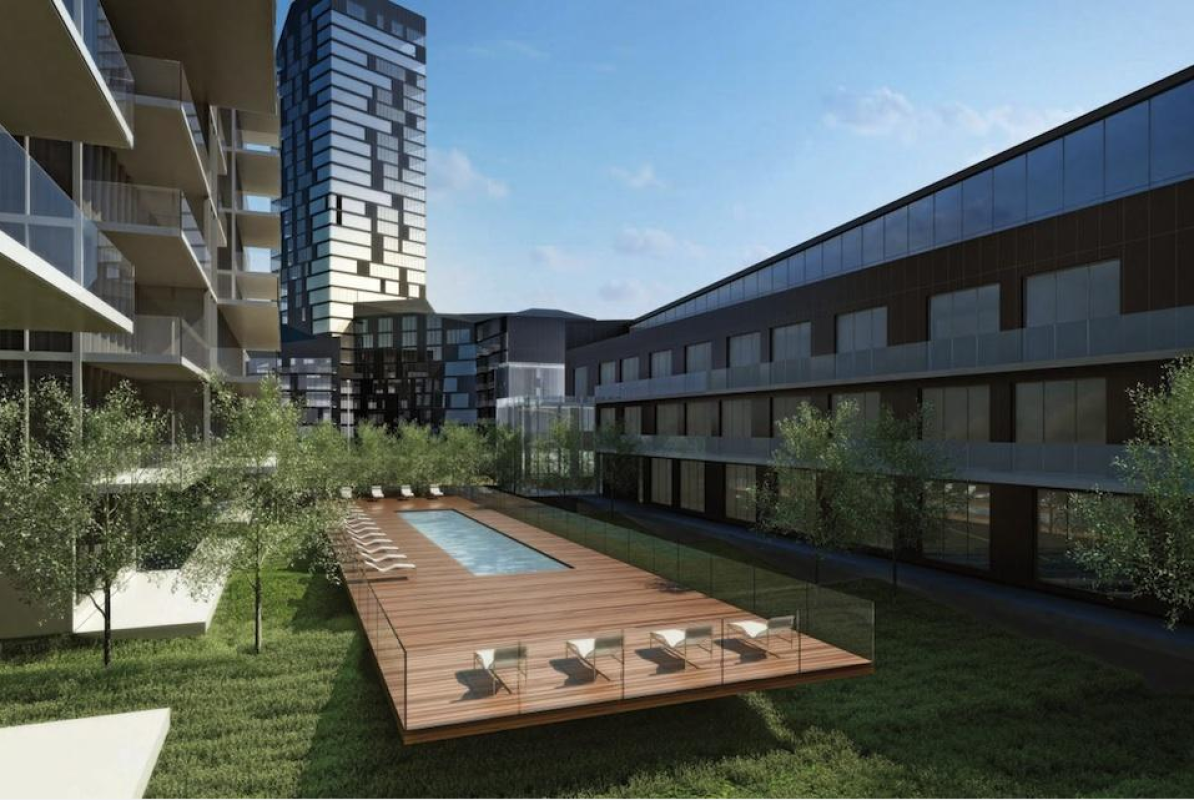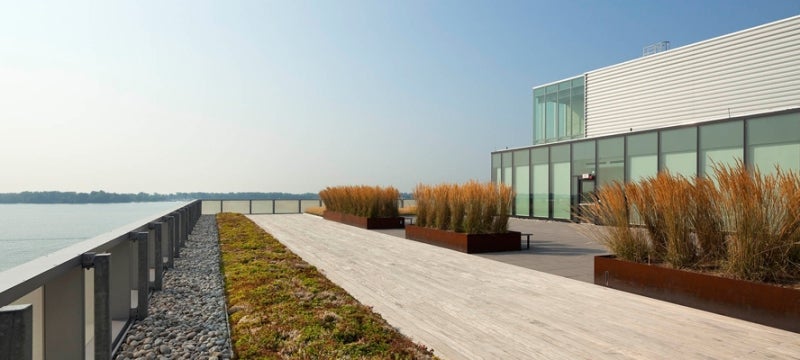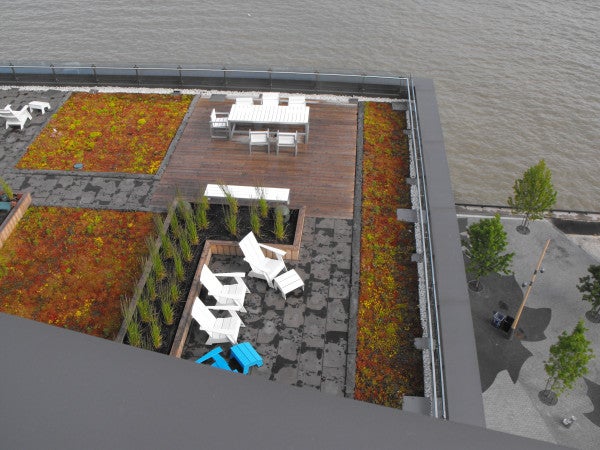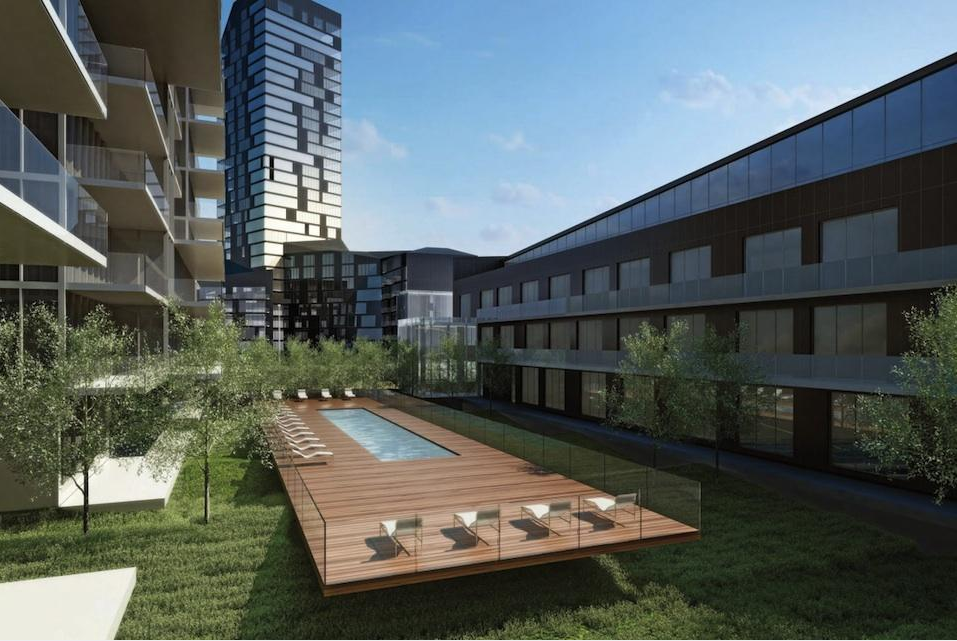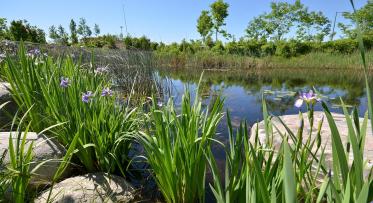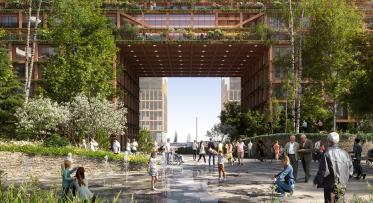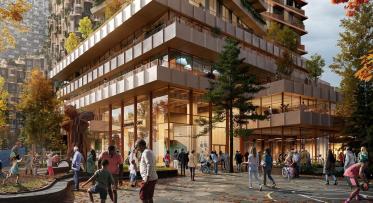The Benefits of Green Infrastructure: Waterfront Green Roofs are Beautiful and Functional
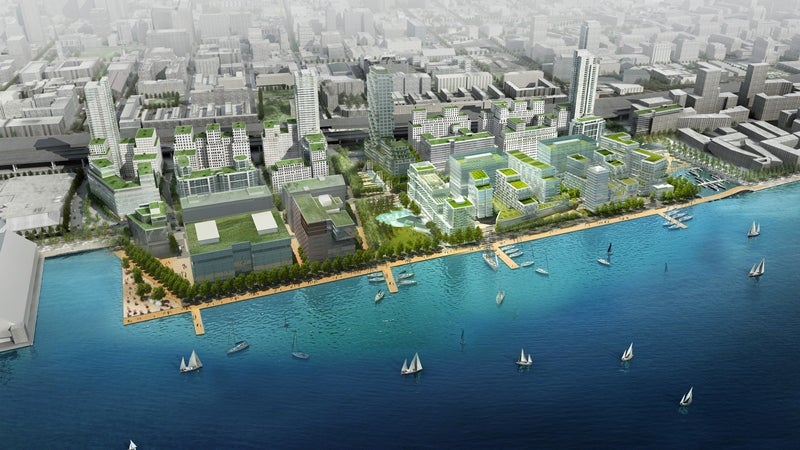
An artist’s rendering of the emerging East Bayfront neighbourhood reveals the proposed canopy of green rooftops along Toronto’s waterfront.
POSTED: AUGUST 11, 2014
BY: ELSPETH HOLLAND
Summer is the time in Toronto when we really appreciate our cities rooftop spaces. If you’re lucky enough, it’s a great time of year for lounging poolside or taking in the hustle-and-bustle of city streets from a bird’s eye view. But beyond offering sweeping views and fine tanning spots, rooftop spaces can provide even more value as green roofs.
Not only can a green roof be aesthetically beautiful, but it can have a number environmental, economic, and social benefits. Green roofs improve air quality, reduce the urban heat island effect, increase plant biodiversity and attract wildlife, help to manage stormwater and connect people with nature. More and more benefits are being linked to people’s connection with nature, including increased work productivity and a better sense of well-being.
You may have heard of the urban heat island effect – a phenomenon that describes how the concentration of people and buildings in cities’ downtown areas create elevated temperatures as compared to rural surrounding areas. Based on a report prepared by Ryerson University, wide spread green roof installations could reduce summer air temperature in Toronto between 0.5 and 2 degrees C, depending on the particulars of the green roof and local ambient air temperatures. According to the study, reduction of the urban heat island effect could result in annual energy savings of $21 million in Toronto.
New research on the monetary value of green roofs by Smart Cities Research Services in Montreal found that just the benefits of stormwater management made by green roofs is valued at about $4.26 per square foot. These green roof services are highly valued in that they naturally filter untreated water before it makes its way in to the nearest storm sewer and prevent flooding in the city. Additional findings included that the visual appeal of green roofs can increase property value of nearby buildings by up to 11% – and that's just for a view of a green roof on a building next door!
Because of the benefits that green roofs deliver, we included them in the Minimum Green Building Requirements for Toronto’s waterfront – developers are required to devote 50% of available roof space. This requirement also requires that 100% of low-slope roofs are designed to accommodate an intensive green roof. To date, this requirement has helped create more than 82,882 square feet of green roof installation as part of our revitalization projects.
And we’re not the only public advocate for green roof installation – since April 2012, the City of Toronto Green Roof bylaw requires all new commercial, institutional, residential and industrial developments over three storeys to be built with a green roof.
As green roofs become the new norm for green buildings, their innovative environmental features will continue to unfold. In the future, we may see rooftops used for sustainable agriculture use, used as spaces for special events, include intensive designs and park-like installations, and allow for architectural variability that will influence how we design buildings.
Let’s take a closer look at some of the green roof installations on some of the new buildings on Toronto’s waterfront...
A landscaped roof garden at the George Brown College Waterfront Campus makes for very green outdoor lounge space. (Image courtesy of KPMB, photo by Tom Arban)
Leading the way for innovative educational facilities, the new Health Sciences campus features a total of 62% green roof coverage, including a highly efficient irrigation system and flow-control drains which have helped save 40% of potable water and eliminate untreated stormwater runoff by harvesting rainwater.
A rooftop patio at the Corus Entertainment headquarters includes lounge furniture and plenty of plantings. (Image by @wobuilt on Twitpic)
The whimsical and fun design of the Corus Entertainment headquarters is made even cooler with its green roof – including a stormwater management system to collect rainwater that is used throughout the building, which has helped reduce water consumption by over 30%.
An artist’s rendering of the River City Phase 2 development shows us how green space and urban space can coexistence beautifully. (Image by Saucier + Perrotte Architects, courtesy of Urban Capital)
The green roof design of this development is beautiful, sustainable and functional. Once complete, this green space will accommodate intensive green roof features – plant options such as trees and shrubs and include a deeper soil depth to create a park-like atmosphere. It will also feature a rainwater harvesting system that will be used to irrigate the courtyard and reduce water consumption.

